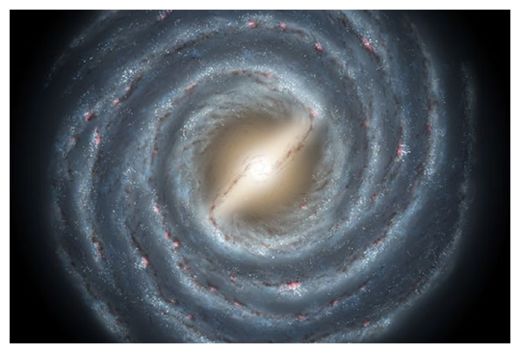
© NASA
The discovery, reported in the journal
Nature, challenges our understanding of the physics taking place in the galactic centre.
The astronomers speculate the mysterious cloud could be generated by a vast graveyard of thousands of stellar remnants clustered in the shadow of the supermassive black hole.
But the source still eludes them.
"
This is something that has never been seen before, I only wish we knew what it is that we discovered," says one of the study's authors Professor Chuck Hailey of the
University of Columbia in New York.
"We have quite a few theories of what it could be, but none of them fits the facts, so at this point it's something of a mystery."
The international team of scientists discovered the huge X-ray cloud during observations using the NuSTAR X-ray Observatory to study a region 30 light-years wide around the supermassive black hole at the centre of the Milky Way galaxy.
"There really was no evidence to suggest that there should be this diffused foggy type of high energy X-rays in the region around the central black hole," says Hailey.
Stellar graveyardThe galactic centre contains a disproportionally large population of stellar objects, including a large number of both massive hot young stars and burnt out dead stars.
The X-rays could be produced by an unusually large population of white dwarf stars, the stellar corpses of Sun-like stars after they've stopped shining.
"White dwarfs can emit fairly intense high energy X-rays, and they are fairly common in the universe because there are many stars similar to our Sun," says Hailey.
"Although if they're the explanation, they're a bit unusual, because it would imply these white dwarfs are somewhat more massive than other white dwarfs seen elsewhere in the galaxy. So it's very strange to find all these very heavy white dwarfs close to the supermassive black hole."
Alternatively, the X-rays could be produced by another type of dead star called a pulsar, the superdense remains of a star far more massive than the Sun, which exploded as a supernova when it ran out of fuel and stopped shining.
"If this is the explanation, then there must be a very large population of them around the supermassive black hole, and in fact many theorists have speculated that there should be large numbers in that vicinity," says Hailey.
"As these stars spin, they emit very strong pulses of radio emissions. However we've never detected any of these radio pulsations from objects near the supermassive black hole, so it would be really unusual to detect them in X-rays but not radio.
"So that's an explanation that would be very exciting and really interesting."
But the most exciting possibility, according to Hailey, are stellar mass black holes, which is formed when stars even more massive than those that form pulsars go supernova and die.
"These stellar black holes would have another star orbiting around them in a binary system, and they often emit very high energy X-rays because material swirls off the living star and gets captured or eaten by the black hole producing copious X-rays," says Hailey.
"But again the problem with this theory is that it would require a huge number of these stellar mass black hole binaries in the region of the supermassive black hole at the galactic centre, and we don't see a lot of evidence of that, but that would be just amazing!"
Or not a graveyard at allHowever, the X-rays could just as easily be produced by the supermassive black hole itself.
"We know black holes in the centres of galaxies produce jets of particles, and these very energetic particles could collide with gas in the vicinity around the supermassive black hole, producing very high energy X-ray emissions," says Hailey.
"This discovery tells us that the galactic centre with the supermassive black hole, and a whole bunch of stars crowded into a very small region is very peculiar.
"In virtually every aspect when we look at the galactic centre we see something that looks very different from out in the disk or in the halo where the density of stars is much lower."
Reader Comments
to our Newsletter